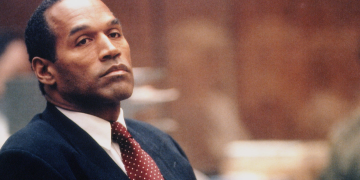In The Outrun, Rona (Saoirse Ronan) tries to control her world. She raises her hands and pretends to lead the waves or the crowd at a club, trying to feel in charge of her life, which feels chaotic.
Director Nora Fingscheidt adapts Amy Liptrop’s memoir with skill, blending the past and present to present a powerful look at addiction, highlighted by Ronan’s outstanding performance.
‘The Outrun’ Shows the Complicated Life of Addiction
Fingscheidt uses a unique way of telling Rona’s story, showing how her struggles with alcohol are always with her. When we first see Rona, she is at a London pub, having a party by herself. This ends with her getting drunk and picked up by a stranger, waking up the next day with a black eye.
The story jumps forward in time to when Rona is out of rehab and back home in the Orkney Islands. Here, she helps her father (Stephen Dillane) with his farm, supports him during his bipolar episodes, and argues with her mother (Saskia Reeves) about her strong Christian beliefs.
The film goes back and forth in time, showing that Rona’s alcoholism is always a part of her life. In flashbacks, we see her relationship with her boyfriend Daynin (Paapa Essiedu) fall apart because of her angry outbursts when she drinks. These memories show moments of happiness but also times of destruction, filled with regret and a desire to feel that happiness again.
As we watch Rona in the Orkney Islands, we see how difficult her life truly is. She works hard and tries to discover who she wants to be, but one negative comment from her dad or a glass of wine can tempt her to relapse.
Temptation is everywhere, and giving in to it brings her happiness that she cannot find when sober. Fingscheidt highlights the constant presence of alcohol in Rona’s life, showing how even a little can trigger her cravings.
Saoirse Ronan Delivers an Outstanding Performance in ‘The Outrun’
Ronan is impressive as Rona. Even when we see her do terrible things, we want her to survive just one more day. Through her acting, we feel the horror of addiction. Every sip is a chance, and every bottle feels precious. Ronan gives an emotional performance, making it seem like Rona is fighting hard against her desires in every scene.
Ronan shines in roles that are often personal, where a smile or a look can show her feelings about her surroundings. This is especially true in The Outrun, as we watch Rona destroy herself, rebuild her life, and then fall again. We see disappointment, hope for improvement, and the joy of finding more in life than just drinking.
The film needs a performer who can express all of this without speaking much since Rona often thinks about her life alone. After years of amazing roles, Rona may be one of Ronan’s best achievements, showcasing her ability to convey deep emotions without words.
Essiedu also shines in his role, acting as a viewer’s representative as we watch Rona slowly self-destruct. His performance is quiet yet heartbreaking as he sees his love slipping away. Essiedu doesn’t speak much in the film, but the sadness in his eyes communicates everything he needs to express.
While we see how Rona’s actions affect others, Essiedu’s character shows the deep pain that addiction brings to those around the person struggling.
The beauty of Scotland’s shores and London’s streets comes to life thanks to cinematographer Yunus Roy Imer. The film’s visual style helps the audience feel the cold nights, the celebrations, the confusion from drinking, and the warmth of community. Editor Stephan Bechinger skillfully pieces the story together, ensuring the many time jumps remain clear and concise, which is a remarkable achievement.
Nora Fingscheidt’s Strong Direction Makes ‘The Outrun’ Shine
Fingscheidt’s writing and directing bring everything together perfectly. The screenplay tells Rona’s story in an ambitious way, making it stronger than typical addiction films. Fingscheidt shifts the warmth between London and Scotland as Rona’s journey unfolds.
The close-ups of Rona reveal how deeply she changes. Fingscheidt handles the tough subject with care, avoiding a sad portrayal that could have been overwhelming.
One questionable aspect is Rona’s narration. Sometimes it works well, especially when she shares Scottish myths that come to life through beautiful animation.
However, at times it gives unnecessary details. The narration includes information that most viewers would already know, making one wonder if the film would benefit from being less reliant on it.
Together, Ronan and Fingscheidt create a remarkable film, leading to a strong ending that ties everything together and presents a stunning drama. Many films about addiction exist, so it takes effort for one to stand out. However, Ronan and Fingscheidt find a unique and beautiful way to tackle this challenging topic.

The Outrun follows Rona (Saoirse Ronan), who tries to control her chaotic life while battling alcoholism. Director Nora Fingscheidt adapts Amy Liptrop’s memoir with a nonlinear approach, highlighting Rona’s struggles through her time in rehab and back home in the Orkney Islands.
As she faces relationships and family challenges, her addiction remains a constant threat. Ronan delivers an emotional performance, capturing Rona’s turmoil and resilience. The film’s beautiful visuals, alongside strong writing and directing, create a powerful scheme of addiction, making it a standout drama that resonates with audiences.





